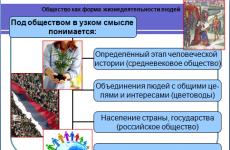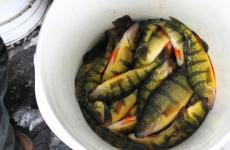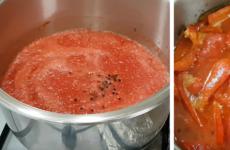Peaty swampy soils story for school. Swampy (peaty) soils. Characteristics of bog-podzolic soils
Peat bog soils mainly consist of organic matter, are rich in nitrogen, which is often in a form that is inaccessible to plants. These soils contain little potassium and critically little phosphorus.
However, there is such a variety as peat-vivianite soils. On the contrary, their phosphorus content is high, but it is contained in compounds that are inaccessible to plants. Peat-bog soils are also characterized by good air and water permeability, but often have excessive moisture content. Peaty soils warm up slowly because peat conducts heat poorly. Because structurally peat soils are a kind of sponge that easily absorbs but also easily releases water, their structural composition should be improved by increasing the content of solid particles.
Soil improvement measures
The main measures to improve this type of soil should be carried out in two directions. To normalize the process of processing organic matter, which will result in the release of nitrogen and its transformation into a form accessible to plants, it is necessary to create conditions for the development of normal biological life in the soil. To do this, it is necessary to add manure to the soil, slurry, compost, sawdust, use microbiological preparations. The second direction for improving peat-bog soils is to increase the content of phosphorus and potassium in them in a form accessible to plants. To do this, when cultivating the soil, phosphorus-potassium fertilizers should be applied, and on peat-vivianite soils, the dose of phosphorus fertilizers is halved. To create a more porous, lumpy structure of peat soils, it is recommended to add compost, a little clay flour, and possibly coarse sand.
Bog soils form in various swamps. They are divided into types: swamp high peat and swamp lowland peat.
Boggy raised peat soils. These soils are formed in raised bogs in the northern and middle taiga in the north Western Siberia, in Kamchatka, Sakhalin. Indicator plants for such soils are sphagnum mosses, woody ones are heavily oppressed pine or spruce, dwarf birch, and semi-shrubs are wild rosemary, Cassandra, cloudberry, blueberry, cranberry, Scheuchzeria, cotton grass.
There are subtypes: bog raised peat-gley (peat thickness less than 50 cm) and bog raised peat (peat thickness more than 50 cm) soils.
Boggy raised peat-gley soils are found in shallow drainless depressions of lowland watersheds and along the edges of raised bogs. In their profile, the following horizons are distinguished: A 0 0 - sphagnum moss with a thickness of 10...20 cm from undecomposed stems of sphagnum mosses with an admixture of rhizomes of subshrubs, tree roots and herbs; T - peat horizon with a thickness of 20...50 cm, divided into subhorizons T (weakly decomposed) and T 2 (with an increased degree of decomposition); color from light brown to dark brown depending on decomposition; the transition is abrupt; G - mineral gley horizon, top part which is bluish-dark gray due to flowing humus, and the lower one has the appearance of bluish-gray gley on loamy-clayey deposits or a rusty-brown ferruginous horizon on sands and sandy loams.
The soils are strongly acidic (pH KCl 2.6...3.8). The degree of saturation with bases is low (10...50%), ash content is low (2.4...6.5%), density is low (0.03...0.10 g/cm3), moisture capacity is high (700 ...1500%).
Boggy raised peat soils (Fig., a) are common in the central parts of raised peat bogs. The differentiation of the profile into horizons is weakly expressed. Sphagnum moss usually stands out from above; beneath it lies highly moisture-saturated peat of brown or yellow-brown color. The boundary between peat soil and peat organogenic rock is difficult to distinguish. The soil differs from this rock in its high filtration coefficient and high water permeability when the level decreases groundwater. The soils are low-ash, strongly acidic (pH K p 2.5...3.6), soil saturation with bases is low (10...30%), absorption capacity is 80...90 mg-eq/100 g. Content of gross forms calcium, potassium, phosphorus are low (0.1...0.7%, 0.03...0.08, 0.03...0.20%, respectively).
The main genera of raised bog soils are: ordinary (organogenic horizon of sphagnum or dwarf-shrub-cotton grass peat), transitional (sphagnated wood-moss and sphagnized grass-moss), humus-ferruginous (on sands).
Raised bog soils are divided into types according to the thickness of the organic horizon and the degree of peat decomposition. According to the thickness of the organic horizon, the following types are distinguished: peaty-gley thin soils with a peat thickness of 20...30 cm; peat-gley (30...50 cm); peat on small peats (50...100 cm); peat on medium peats (100...200 cm); peat on deep peats (> 200 cm). Based on the degree of decomposition of peat in the upper layer (30...50 cm), peat is distinguished (< 25 %) и перегнойно-торфяные (25...45 %) почвы.
Swampy lowland peat soils. These soils (Fig. 6) develop in deep depressions in the relief of watershed areas, depressions of river terraces and on slopes in the taiga-forest and forest-steppe zones with excessive moisture from mineralized groundwater.
Rice. Swamp soils: a - swamp raised peat; b- swamp lowland peat
Subtypes of lowland peat bog soils: lowland bog depleted peat-gley, lowland bog (typical) peat-gley, lowland bog depleted peat, lowland bog (typical) peat.
Swampy lowland peat-gley soils are distributed under nutrient-demanding (eutrophic) herbaceous hygrophytic tree and shrub vegetation and hypnum mosses in depressions on watersheds and river terraces, along the outskirts of lowland swamps. In the profile, the following horizons are distinguished: peat-humus (T p) with a thickness of 30...80 cm, dark brown color, intertwined with plant roots; humus (A 1) - black, bluish-dark gray in color, saturated with water; gley (G) - gray, olive-gray color. The roots of plants are observed rust spots, iron hydroxide lubricants and black manganese formations. Degree of base saturation 20...30%
Boggy lowland peat soils are found in the central part of lowland bogs. Their profile develops within peat layers with a thickness of 30...60 cm (in heavily watered swamps) to 60...70 cm (in slightly watered swamps). Peat horizon T is divided into subhorizons (T 1, T 2, etc.) according to the degree of peat decomposition. Soils differ from organogenic peat rocks in color and degree of decomposition. The rock is usually light yellow, yellow-brown, made from well-preserved plant remains. Ash content ranges from 10 to 30...50%.
Main genera: ordinary, carbonate (contain from 5...10 to 20...30% calcium carbonates), solonchak (0.3...2.0% of readily soluble salts), mineralized (5...25% Fe 2 0 3 and more), silted (the upper part is enriched with silty particles).
Soil subgenera: moss, woody, herbaceous. The types of these soils are similar to the types of raised bog soils.
Swampy lowland peat soils have a slightly acidic or neutral reaction (pH KCl 5.0...6.5). The absorption capacity is 130...150 mg equiv/100 g of soil, the degree of saturation with bases is 90...97%. The soils contain 1.5...5% calcium, 1.6...3.8% nitrogen, are poor in potassium (0.08...0.20%) and phosphorus (0.45...0.60 %).
Peat bogs soil various types and peat capacities occupy 2.9 million hectares, which is 14.2% of the republic’s area. Largest quantity peat-bog soils are located in the Brest, Minsk and Gomel regions.
These soils are formed under the influence of the bog process of soil formation, which manifests itself in the accumulation of organic matter in the form of semi-decomposed plant residues (peat formation) and in the gleying of the mineral part of the soil.
Land swamping can occur in several ways: surface swamping with atmospheric waters, swamping with soft groundwater or hard groundwater. The main tracts of peat-bog soils were formed as a result of swamping of land.
The formation of peat-bog soils also occurs when reservoirs (lakes, river creeks, oxbow lakes, etc.) are covered with peat. When reservoirs are covered with peat, the thickness of peat bogs can reach 15 m or more.
The main part of the swamps of Belarus is concentrated in the Polesie lowland, where peat-bog soils of lowland type predominate.
Peat-bog soils of lowland and upland types are very different in their properties, and, consequently, in their agricultural use.
Lowland peat soils contain a lot of humic substances. In conditions where the reaction of the environment is close to neutral, in significant quantities humic substances accumulate; the degree of decomposition and ash content of peat is high.
Lowland peat has a bulk density of 0.4...0.6 g/cm 3, moisture capacity - 400...600%, high sorption capacity, low thermal conductivity.
Peat-boggy raised soils are formed mainly on watersheds under conditions of moistening with fresh stagnant waters. Their vegetation cover is represented mainly by sphagnum moss, subshrubs (cloudberry, wild rosemary, blueberry, etc.) and tree species (spruce, pine, birch), which are usually severely oppressed.
High-moor peat is slightly decomposed plant remains that have not completely lost their anatomical structure. Due to low microbiological activity, their deep decomposition does not occur.
High-moor peat has a low density, huge moisture capacity - 1000... 1100%, poor water permeability and poor thermal conductivity. Sorbs gases well.
Swamp soils in agriculture can be used in two ways: as a source of organic fertilizers and as an object for development and transformation into cultural lands.
For direct fertilization, well-decomposed peat from low-lying bogs is used. After development, it is thoroughly ventilated to eliminate excess moisture, enhance microbiological processes and oxidize harmful ferrous compounds.
It is advisable to use poorly decomposed peat for bedding. It absorbs slurry and gases well, thereby eliminating nitrogen loss. The resulting peat manure has high fertilizing properties.
High quality organic fertilizers obtained by composting peat with the addition of lime, phosphate rock, mineral fertilizers, manure and other components.
As agricultural land, highland and lowland peatlands have different values. More valuable are lowland bog soils, the peat of which has a high ash content, a high nitrogen content, and a favorable reaction. Once drained, they can be converted into highly productive agricultural land.
The composition of peat-boggy soils consists mainly of components of organic origin. In addition, they contain a significant amount of nitrogen, presented in a form unsuitable for plant absorption.
There are two types of bog soils: lowland and raised, which differ sharply from each other in their properties. Low-lying swampy soils are formed in low-lying areas when waterlogged with groundwater. Birch, alder, spruce, and willow grow here, and herbaceous plants - different kinds sedge, horsetail. The high ones are formed in elevated areas when overmoistened with atmospheric or slightly mineralized waters. In such swamps, the tree species most often found are pine, less often birch, a lot of wild rosemary, blueberries, cranberries, etc.
The thickness of the peat layer and high and lowland bog soils ranges from 200-300 mm and can be from 2 to 5 m. If this layer is less than 500 mm, and heavily waterlogged gleyed horizons lie below, then the soils are called peaty or peat-gley. The value of peat is determined by the degree of its decomposition. The higher the degree of decomposition of peat, the better its properties for plants. The degree of peat decomposition in lowland peat soils is 75-90%, and high bog soils contain only 2-5% minerals and, therefore, they are low in plant nutrients.
Peaty-boggy soils are poor in potassium and phosphorus. However, the latter is the main element of the so-called peat-vivianite soils. The phosphorus compounds they contain are inaccessible to the root system of garden and vegetable crops.
Peat-bog raised (ordinary) soils are formed under conditions of excessive moisture by atmospheric water in closed drainage-free depressions on watersheds under moisture-loving vegetation. The weak mineralization of atmospheric precipitation and the lack of nutrients contribute to the growth of sphagnum mosses, which are the least demanding of mineral nutrition conditions. Raised bog peat is characterized by low ash content, weak decomposition of organic matter, and high moisture capacity. The soil has a strongly acidic reaction and high hydrolytic acidity. The soils are characterized by weak biological activity and low levels of natural fertility.
Transitional peat (residually low-lying sphagnized) develop on low-lying bog soils, which in some cases (when the groundwater level drops or when the peat layer rapidly increases) can become detached from the groundwater horizon and lose contact with them, which leads to saturation of the upper peat horizons waters of atmospheric precipitation and the abundant vegetation of lowland swamps is replaced by sphagnum mosses. In agrochemical terms, they differ from high-moor peat in the slightly lower acidity of the soil solution.
For soil of this type characteristic high level water and breathability. However, it is characterized by excessive humidity and does not warm up well. The structure of such soils is similar to foam rubber, which quickly absorbs moisture but also releases it easily.
Cultural activities. Actions aimed at improving the physicochemical qualities of peat-boggy soils should be carried out as follows. First of all, it is necessary to normalize the process of decomposition of organic elements, as a result of which nitrogen is released and transformed into a form available for absorption by plants. In this case, it is necessary to create favorable conditions for the development of soil microflora. To achieve this goal, it is recommended to regularly feed the soil with microbiological substances, compost, sawdust, slurry and manure. In addition, when carrying out cultivation activities, peat-boggy soils must be improved by introducing potassium and phosphorus fertilizers. When processing peat-vivianite soils, the amount of phosphorus fertilizers must be reduced by 2 times.
You can increase the level of porosity in peaty swampy soils by adding clay flour, compost or coarse sand.
The soils of raised and transitional bogs are not very suitable for agricultural use, so they are most often occupied by forests and swamps.
High-moor peat is a valuable bedding material for livestock farming. High peat soils are the main source of cranberry harvest and have important environmental significance.
“Fifteen years ago I began to develop an inherited peatland plot. This turned out to be not a simple matter (I had to study the relevant literature) and very labor-intensive. I'll tell you how to drain a swamp summer cottage. Maybe the experience I’ve gained will be useful to someone.” This is the letter sent to our website by Gennady Veselov from the Leningrad region. Here is his story.
|
Peat-swampy areas are rarely cultivated here. At the same time, they can bring good harvests. Naturally, when they are properly processed. The disadvantages of a summer cottage on a peat bog are known. This is the saturation of methane gas in the soil and the lack of oxygen, as well as the proximity to the groundwater surface. Therefore, to the question, a plot on a peat bog - what to do, the answer is with the right decision The problem is simple: enriching the soil with oxygen, getting rid of methane and lowering the groundwater level.
 How to drain a swamp at the dacha, where to start? The first summer I had to dig drainage ditches 50 cm wide and 70 to 140 cm deep. They need to be dug with a slope of about 1 cm per linear meter. Brushwood was laid at the bottom of the ditches. I covered the branches with old roofing felt, which I had left over after re-roofing. I laid dry grass on the roofing felt, which I mowed before the seeds appeared, so that the dacha plot would not become overgrown with weeds. This grass was covered with crushed dry peat, and the excavated soil was laid on top to form a small hill. After it settled, almost no bedding was required. The construction of such drainage ditches on a summer cottage made it possible to make the soil looser, get rid of methane gas and lower the groundwater level.
How to drain a swamp at the dacha, where to start? The first summer I had to dig drainage ditches 50 cm wide and 70 to 140 cm deep. They need to be dug with a slope of about 1 cm per linear meter. Brushwood was laid at the bottom of the ditches. I covered the branches with old roofing felt, which I had left over after re-roofing. I laid dry grass on the roofing felt, which I mowed before the seeds appeared, so that the dacha plot would not become overgrown with weeds. This grass was covered with crushed dry peat, and the excavated soil was laid on top to form a small hill. After it settled, almost no bedding was required. The construction of such drainage ditches on a summer cottage made it possible to make the soil looser, get rid of methane gas and lower the groundwater level.
How to drain a swamp to make beds on a summer cottage.

Peat is known to be a source of nitrogen necessary for plant development. But as long as it lies in a compressed layer, there is no benefit from it. However, as soon as it was dug up and crushed, bacteria began to work, taking a breath of oxygen, turning the peat into soil suitable for planting. Of course, we had to work hard here too. After all, in order to receive good harvests, at a summer cottage, draining the swamp is not enough. It was necessary to add clay, sawdust from a cow farm and sand to the soil. For the first few years, we also had to feed our peat bog with mineral fertilizers with added microelements.
 Peat retains moisture well and is an excellent mulch. Its top layer (3-5 cm) must be kept dry. This will save your garden from pests and diseases, and your garden from tedious weeding. In addition, peat soils freeze and thaw slowly and do not freeze deeply. Therefore, in our beds on the site of a drained swamp, the plants never froze even during winters with little snow and frost.
Peat retains moisture well and is an excellent mulch. Its top layer (3-5 cm) must be kept dry. This will save your garden from pests and diseases, and your garden from tedious weeding. In addition, peat soils freeze and thaw slowly and do not freeze deeply. Therefore, in our beds on the site of a drained swamp, the plants never froze even during winters with little snow and frost.
Thus, by draining the swamp at my summer cottage, I was able to create fertile soil here in a few years, which is suitable for growing most. Moreover, having improved the area, they planted plum trees, apple trees, cherries, pears, sea buckthorn and chokeberry, which began to produce abundant harvests. So garden plot on a peat bog - this is quite feasible. You just need to put your hands to it.







